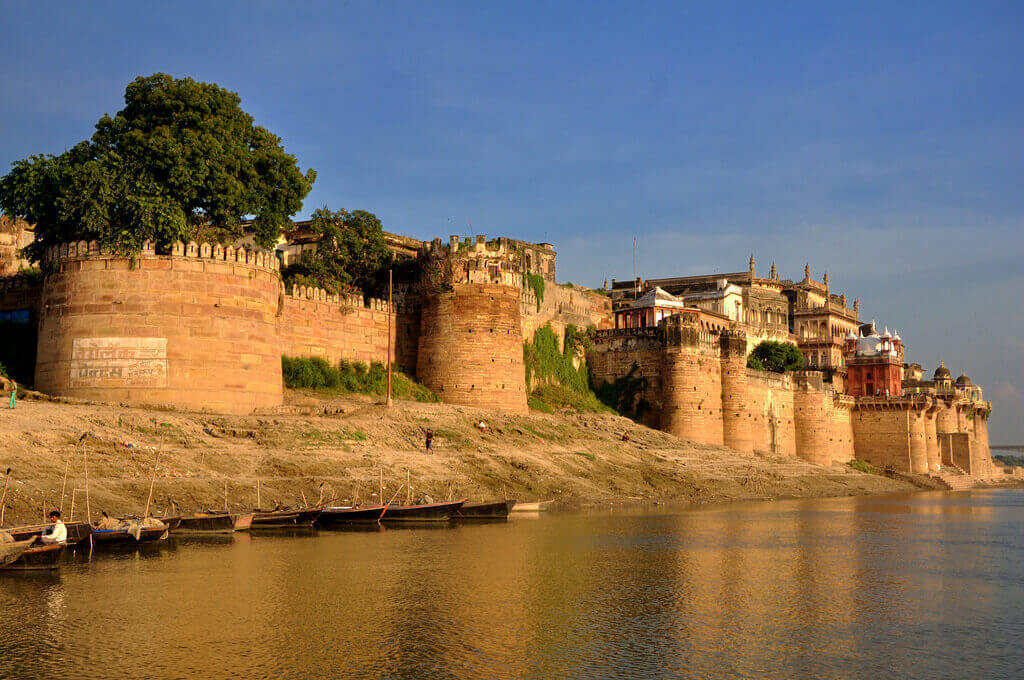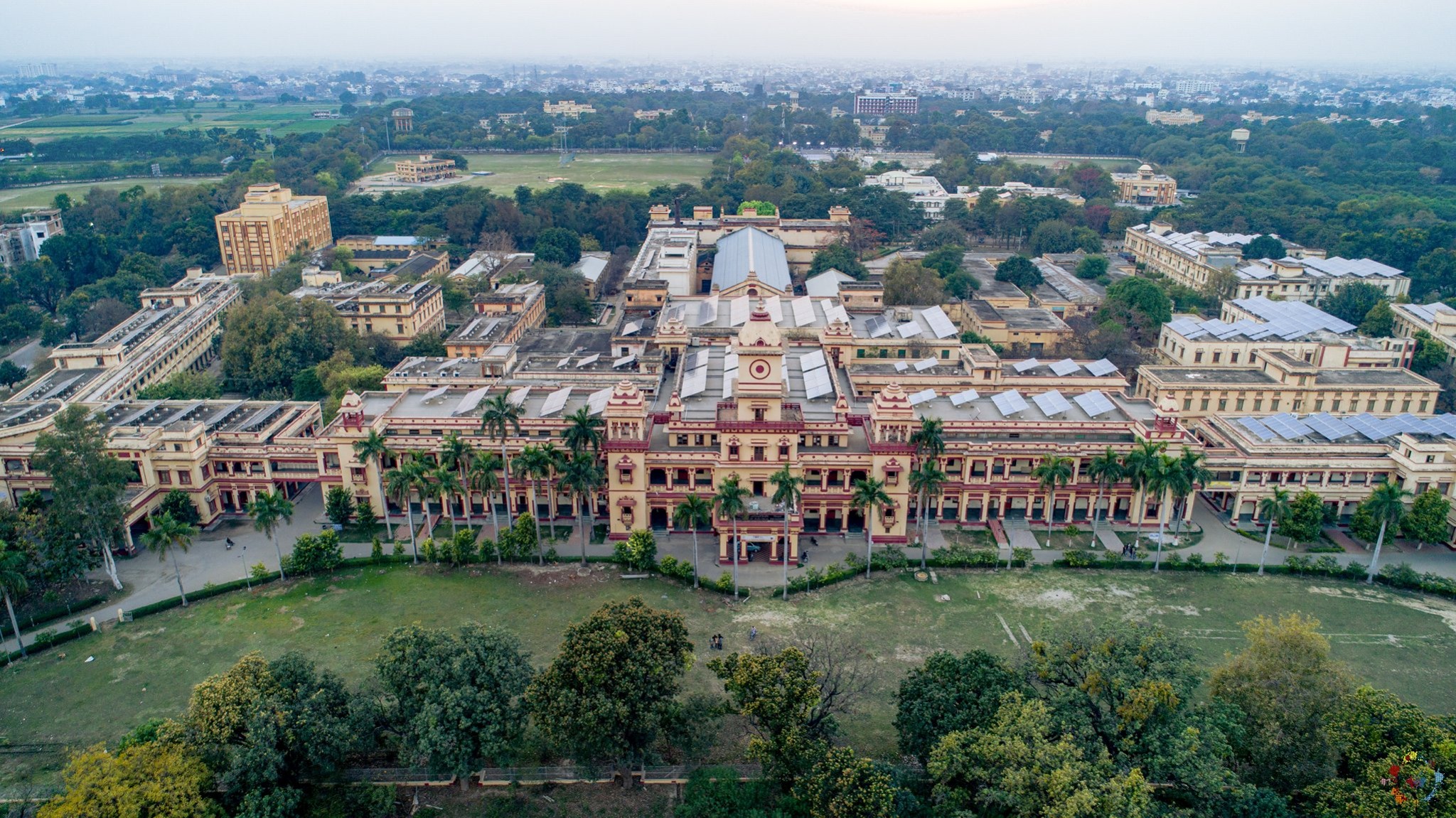
Darbhanga Ghat
Darbhanga Ghat, nestled along the serene banks of the holy Ganges River in Varanasi, embodies centuries of spiritual heritage and cultural richness. Its sacred steps, known as ghats, offer a tranquil sanctuary for devotees and visitors alike to engage in prayers, rituals, and contemplation. Named after the historic Darbhanga Kingdom, this ghat exudes a timeless charm with its ornate architecture, adorned temples, and bustling activities. From witnessing vibrant evening aarti ceremonies to embarking on soul-stirring boat rides along the ghats, Darbhanga Ghat invites travelers to immerse themselves in the spiritual aura and timeless allure of Varanasi, a city steeped in mysticism and devotion.

Kashi Viswanath
The Kashi Vishwanath Temple stands as a beacon of spirituality and devotion in the heart of Varanasi, one of the oldest living cities in the world. Dedicated to Lord Shiva, the temple is a sacred pilgrimage site revered by millions of Hindus worldwide. Its hallowed premises resonate with the chants of ancient hymns and the fragrance of incense, creating an atmosphere of divine grace and sanctity. The temple's towering spire, adorned with intricate carvings and embellishments, symbolizes the timeless bond between humanity and the divine. Pilgrims flock to this revered site to seek blessings, perform rituals, and immerse themselves in the sacred rituals that have been upheld for centuries. As the spiritual nucleus of Varanasi, the Kashi Vishwanath Temple continues to inspire awe and reverence, serving as a testament to the enduring legacy of faith and devotion in Hindu culture.

Sarnath
Sarnath, a tranquil suburb of Varanasi, holds immense significance as the place where Lord Buddha delivered his first sermon after attaining enlightenment. As a sacred pilgrimage site for Buddhists worldwide, Sarnath is imbued with an aura of serenity and spiritual reverence. The Dhamek Stupa, a towering monument dating back to the 5th century BCE, stands as a symbol of Buddhist architecture and devotion, marking the spot where Buddha preached the principles of Dharma to his first five disciples. The surrounding ruins of ancient monasteries, stupas, and temples offer a glimpse into Sarnath's rich cultural and religious heritage, while the serene gardens provide a tranquil setting for meditation and contemplation. Today, Sarnath serves as a timeless sanctuary for seekers of inner peace and enlightenment, inviting visitors to connect with the teachings of the Buddha and experience the profound tranquility that permeates this sacred land.

Manikarnika Ghat
Manikarnika Ghat, situated along the banks of the sacred Ganges River in Varanasi, holds a profound significance in Hindu mythology and spirituality. Revered as one of the oldest and most auspicious ghats in Varanasi, Manikarnika Ghat is believed to be the spot where Goddess Parvati's earring (Manikarnika) fell while she was engaged in a celestial game with Lord Shiva. Hindus consider it highly auspicious to be cremated at this ghat, as it is believed to grant liberation from the cycle of birth and death. The continuous burning of funeral pyres along the ghat's steps symbolizes the eternal cycle of life, death, and rebirth. Despite its association with mortality, Manikarnika Ghat exudes a profound sense of spirituality and acceptance of the transient nature of existence, making it a revered destination for pilgrims and seekers of divine wisdom.

Ramnagar Fort
Ramnagar Fort, located on the eastern bank of the Ganges River in Varanasi, stands as a testament to the rich cultural and architectural heritage of the region. Built in the 18th century by the Kashi Naresh (King of Kashi), the fort serves as the ancestral residence of the royal family of Varanasi. Its imposing structure, constructed with red sandstone, showcases a blend of Mughal and Rajput architectural styles, adorned with ornate carvings and intricate designs. Within the fort, visitors can explore a fascinating array of courtyards, halls, and pavilions, each echoing the grandeur and opulence of a bygone era. The fort also houses a museum, offering a glimpse into the royal lifestyle through its collection of vintage artifacts, including weaponry, textiles, and antique vehicles. With its historical significance and architectural splendor, Ramnagar Fort stands as a cherished landmark, inviting visitors to delve into the rich tapestry of Varanasi's storied past.

Banaras Hindu University
Banaras Hindu University (BHU), located in Varanasi, Uttar Pradesh, is a prestigious institution renowned for its academic excellence and rich cultural heritage. Founded in 1916 by Pandit Madan Mohan Malaviya, a visionary leader and educationist, BHU is one of the largest residential universities in Asia. Spread across a sprawling campus, the university encompasses a wide range of faculties, including arts, sciences, engineering, medicine, management, and law, offering undergraduate, postgraduate, and doctoral programs. BHU is deeply rooted in Indian traditions and values, with a commitment to holistic education that combines academic rigor with spiritual and moral development. The university's historic buildings, lush greenery, and vibrant campus life create an inspiring environment for learning, research, and personal growth. With its emphasis on academic excellence, research innovation, and social responsibility, Banaras Hindu University continues to uphold its legacy as a beacon of knowledge and enlightenment in the heart of Varanasi.

Assi Ghat
Assi Ghat, nestled along the sacred banks of the Ganges River in Varanasi, embodies a timeless blend of spirituality, culture, and tradition. As one of the most revered ghats in the city, Assi Ghat holds immense significance in Hindu mythology and pilgrimage. Legend has it that Lord Shiva, after slaying a demon at this spot, took a dip in the Assi River, bestowing the ghat with divine sanctity. Today, Assi Ghat serves as a vibrant hub of spiritual activities, attracting pilgrims, sadhus, and seekers from all walks of life. The ghat bustles with energy as devotees perform rituals, offer prayers, and take holy dips in the sacred waters of the Ganges. At dawn, the ghat comes alive with the mesmerizing spectacle of the Ganga Aarti, a daily ritual that pays homage to the river goddess and invokes blessings for all. With its serene ambiance, panoramic views of the river, and colorful festivities, Assi Ghat offers visitors a soul-stirring experience and a glimpse into the timeless charm of Varanasi's spiritual heritage.

Dasaswamedh Ghat
Dasaswamedh Ghat, situated on the banks of the sacred Ganges River in Varanasi, holds a prominent place in Hindu mythology and spiritual tradition. Translated as the "Ghat of Ten Sacrifices," Dasaswamedh Ghat is steeped in legend, believed to be the spot where Lord Brahma performed the ritual of the ten horse sacrifices (Das Ashwamedh Yajna) to usher in the creation of the universe. Today, the ghat stands as a vibrant center of religious activity and cultural significance. Devotees flock to Dasaswamedh Ghat to partake in sacred rituals, offer prayers, and witness the mesmerizing Ganga Aarti, a daily ritual that pays homage to the river goddess Ganga. The ghat's bustling atmosphere, adorned with colorful rituals, floating lamps, and melodious chants, creates an enchanting ambiance that captivates visitors and pilgrims alike. With its rich heritage, spiritual aura, and picturesque setting, Dasaswamedh Ghat continues to be a cherished symbol of devotion and reverence in the ancient city of Varanasi.